It is telling that Pixar’s least-discussed movies, A Bug’s Life and Cars, are the only two in its oeuvre completely divested of the presence of humans. Or, to be precise, bug species and car models provide visually striking designs for otherwise totally human personalities in these two movies: a typical strategy of American animation to enliven its stories. At its most distinctive, though, Pixar is a stalwart champion of anthropomorphised “others” whose gains we take for granted (toys, supermen, ornamental fish, rubbish compactors) or whom we treat with disdain (rats, old grumps, bedside monsters). The studio’s preferred medium of CGI is the ideal conduit for this reversed perspective: more uncanny and spatial than traditional 2D, yet brighter and more fantastical than live-action—as though we’re seeing our world heightened in another’s eyes. By aligning our empathies with its protagonists against the onscreen humans who mistreat them, Pixar’s narratives stoke a wondrously complicated guilt rarely seen in other family films—and nowhere have they demonstrated this better than with Toy Story 2 and The Incredibles.
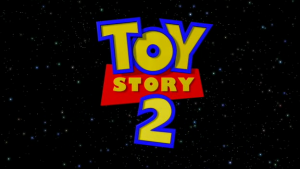
Toy Story 2 stands alone in its status as an animated sequel—a label whose history is rife with profiteering and artistic bankruptcy—by being needlessly, absurdly good. It’s hard to realise that the movie was once relegated for direct-to-video release when one observes how cannily the final feature is put together, as its own movie and as a follow-up to its groundbreaking predecessor. Buzz Lightyear’s exhilarating flight through outer space doesn’t just provide a kinetic, adrenalin-pumping opener for Toy Story 2, it also throws a curveball to Pixar fans with its obvious discontinuity from the “realism” of Toy Story. Sure, at the end of this sequence, we’re reassured that Toy Story 2 hasn’t completely abandoned the thrust of what made the first movie such a poignant keeper (and no, it’s not just “all a dream”). But we’re also primed for a sequel that doesn’t look to its predecessor as an excuse or crutch to limit the adventurousness of its narrative, but as a springboard for its own wild, unfettered marvels.
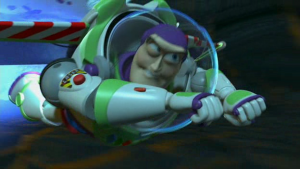 Now that Buzz no longer thinks he is an actual space ranger, a delusion that drove his narrative arc in the first movie, Toy Story 2 jettisons any existential crises related with “not being real”. The movie thus frees itself to more fully develop the most powerful theme in the series’ arsenal: the much “realer” fear of being left behind. It’s a fear that we can all identify with, but it’s a plight that is especially inherent to being a toy, making the generic title Toy Story such an apt one. If the first Toy Story falters, then, it is that it confines most of our empathy to the character of Woody, a cocky cowboy doll whose place as his owner’s favourite toy is usurped by Buzz. When it isn’t Woody’s jealousy at Buzz that’s propelling the narrative, it’s his desperation to alleviate his fellow toys’ mistrust. Or his fear that he may never find his way home. Or his terror at a sadistic kid’s idea of fun. The movie keeps itself in Woody’s orbit at the expense of everyone else, though to be fair, Tom Hanks’ affable voice and the immediacy of Woody’s situation conspire to make him seem less dangerously self-centred than he is. Nonetheless, we have all the more to celebrate that Toy Story 2 breaks free from its predecessor’s containing gesture, extending the stakes of abandonment to include a generous number of other toys.
Now that Buzz no longer thinks he is an actual space ranger, a delusion that drove his narrative arc in the first movie, Toy Story 2 jettisons any existential crises related with “not being real”. The movie thus frees itself to more fully develop the most powerful theme in the series’ arsenal: the much “realer” fear of being left behind. It’s a fear that we can all identify with, but it’s a plight that is especially inherent to being a toy, making the generic title Toy Story such an apt one. If the first Toy Story falters, then, it is that it confines most of our empathy to the character of Woody, a cocky cowboy doll whose place as his owner’s favourite toy is usurped by Buzz. When it isn’t Woody’s jealousy at Buzz that’s propelling the narrative, it’s his desperation to alleviate his fellow toys’ mistrust. Or his fear that he may never find his way home. Or his terror at a sadistic kid’s idea of fun. The movie keeps itself in Woody’s orbit at the expense of everyone else, though to be fair, Tom Hanks’ affable voice and the immediacy of Woody’s situation conspire to make him seem less dangerously self-centred than he is. Nonetheless, we have all the more to celebrate that Toy Story 2 breaks free from its predecessor’s containing gesture, extending the stakes of abandonment to include a generous number of other toys.
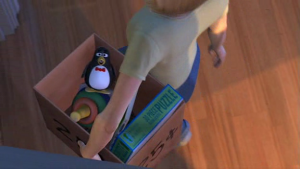 Ironically, we’re alerted that Woody has grown up only after his owner Andy swiftly abandons him to a dusty shelf before leaving for camp, reigniting his former fears. After a hilariously surreal nightmare, Woody wakes up (quite literally) to the notion that his fate is nowhere as jeopardised as those of the toys who don’t share his owner’s favour. Even in Andy’s absence, his mom pointedly doesn’t add Woody to her pickings for a junkyard sale (a scrawled “25¢” is the sly insulting detail in this scene), but in an unforeseen act of gallantry, Woody initiates a rescue mission for the toys that she has. This quickly goes awry, leaving Woody stranded a long way from home once more. Unlike the first movie, though, his story from there doesn’t boil down to a simple “get back to Andy!” motive, coupled with diverting obstacles along the way. Not that Toy Story 2 abandons the pleasures of such a narrative: it twines in a parallel action plot requiring Woody’s peers to navigate the harsh territory of a toy megastore, a capitalist satire populated with ever-smiling Barbies, still-deluded Buzz Lightyears, and the treachery of gaming guides and automatic doors.
Ironically, we’re alerted that Woody has grown up only after his owner Andy swiftly abandons him to a dusty shelf before leaving for camp, reigniting his former fears. After a hilariously surreal nightmare, Woody wakes up (quite literally) to the notion that his fate is nowhere as jeopardised as those of the toys who don’t share his owner’s favour. Even in Andy’s absence, his mom pointedly doesn’t add Woody to her pickings for a junkyard sale (a scrawled “25¢” is the sly insulting detail in this scene), but in an unforeseen act of gallantry, Woody initiates a rescue mission for the toys that she has. This quickly goes awry, leaving Woody stranded a long way from home once more. Unlike the first movie, though, his story from there doesn’t boil down to a simple “get back to Andy!” motive, coupled with diverting obstacles along the way. Not that Toy Story 2 abandons the pleasures of such a narrative: it twines in a parallel action plot requiring Woody’s peers to navigate the harsh territory of a toy megastore, a capitalist satire populated with ever-smiling Barbies, still-deluded Buzz Lightyears, and the treachery of gaming guides and automatic doors.
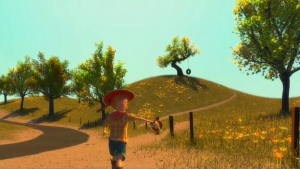 But the major plot of Toy Story 2 turns on an empathic dilemma, not on physical shenanigans. When Woody finds himself with a trio of spin-off toys from his merchandised TV series, he is saddled with deciding the fate of a community to which he never knew he belonged. What continually amazes me is how deeply the stakes change—from being usurped to being forgotten entirely, and then into a choice between ephemeral bliss or a lifetime of compromised happiness—even as Woody remains in the same room throughout. For all its visual wonders, Toy Story 2 hinges ultimately on its rhetorical power, in two heartbreaking songs (the nostalgic elegies “When She Loved Me” and “You’ve Got A Friend in Me”) and in the specific histories evoked by Buzz, to events of the previous movie; and by these new characters, to their own identifiable offscreen troubles. Given that each side has a point, Woody’s eventual decision is deeply satisfying, which is why the curt end he deals to one antagonist may come off as more puerile than it deserves to be—a notable lapse in the movie’s otherwise-gratifying maturity.
But the major plot of Toy Story 2 turns on an empathic dilemma, not on physical shenanigans. When Woody finds himself with a trio of spin-off toys from his merchandised TV series, he is saddled with deciding the fate of a community to which he never knew he belonged. What continually amazes me is how deeply the stakes change—from being usurped to being forgotten entirely, and then into a choice between ephemeral bliss or a lifetime of compromised happiness—even as Woody remains in the same room throughout. For all its visual wonders, Toy Story 2 hinges ultimately on its rhetorical power, in two heartbreaking songs (the nostalgic elegies “When She Loved Me” and “You’ve Got A Friend in Me”) and in the specific histories evoked by Buzz, to events of the previous movie; and by these new characters, to their own identifiable offscreen troubles. Given that each side has a point, Woody’s eventual decision is deeply satisfying, which is why the curt end he deals to one antagonist may come off as more puerile than it deserves to be—a notable lapse in the movie’s otherwise-gratifying maturity.
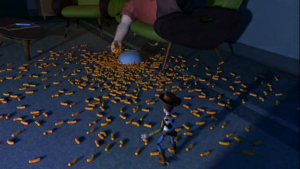 Narrative ingenuity aside, Toy Story 2 sparks to its own immaculate construction, boasting some of the most jocular, attention-calling scene transitions this side of Citizen Kane: an American flag billowing behind a stump-speechmaker, an offhand order to “use your head!”, etc. The movie operates on the kind of delirious logic where a minefield of Cheetos looms wider than a four-lane street in busy traffic; where drivers swerve to obey traffic cones; where a plane lands on a runway after the last one barely left it; or where, in more targeted allusions, characters are disarmed swiftly by parental revelations (Star Wars) or camera flashes (Rear Window). Screw Tarantino or Dante! Here John Lasseter presents us movie-moviedom at its finest, in which our heroes are powered by the forces of entertainment, and the laws by which their universe runs are not only informed, but dictated by the movements of earlier classics. (Even when the movement is that of a gurgling belly, at its funniest here since Chaplin’s Modern Times.) And if its heaps of wit and feeling are to be any indication, Toy Story 2 can stand proudly aside these classics as one of the best that cinema has to offer.
Narrative ingenuity aside, Toy Story 2 sparks to its own immaculate construction, boasting some of the most jocular, attention-calling scene transitions this side of Citizen Kane: an American flag billowing behind a stump-speechmaker, an offhand order to “use your head!”, etc. The movie operates on the kind of delirious logic where a minefield of Cheetos looms wider than a four-lane street in busy traffic; where drivers swerve to obey traffic cones; where a plane lands on a runway after the last one barely left it; or where, in more targeted allusions, characters are disarmed swiftly by parental revelations (Star Wars) or camera flashes (Rear Window). Screw Tarantino or Dante! Here John Lasseter presents us movie-moviedom at its finest, in which our heroes are powered by the forces of entertainment, and the laws by which their universe runs are not only informed, but dictated by the movements of earlier classics. (Even when the movement is that of a gurgling belly, at its funniest here since Chaplin’s Modern Times.) And if its heaps of wit and feeling are to be any indication, Toy Story 2 can stand proudly aside these classics as one of the best that cinema has to offer.
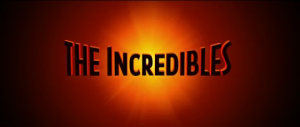
Five years later, The Incredibles heralded the arrival of Brad Bird to Pixar, and with him, its first human protagonists. The complication is that these are superhumans, whose undeniable talent is both celebrated and envied, ultimately leading to a backlash against their public existence. However, the unique fascination of The Incredibles lies not in its themes of a superhero’s career-juggling burdens (a path trodden that same year by Spider-Man 2), the public suspicion of abnormal beings (the domain of the X-Men films), or the malaise of talented crimefighters forced into retirement (criticised by some as “Watchmen-lite”, a nod to the heavier proceedings of Alan Moore’s influential graphic novel). Rather, The Incredibles stands out in its complex braiding of these themes into its distinctive mix of family and superheroics. As I use it here, “family” refers to the all-American nuclear family, an idiom used in The Incredibles to revitalise the tropes of both the superhero action flick and the dysfunctional family dramedy, forming the meat of this movie’s pathos and humour.
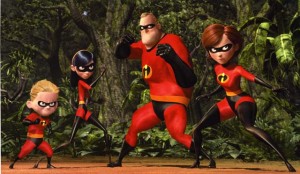 Even the superpowers dealt to each family member seems to fit the idiom: Dad is strong, Mom is flexible, the son is brash, and the daughter self-effacing. Despite my attempt to be catchy in the previous sentence, though, I find that the labels I’ve used inaccurately reduce these characters to their roles as parents and children. For one, Bob Parr (aka Mr Incredible) can barely be said to demand the title of “Dad”, at least early on. After his feats in the movie’s prologue, we find him fifteen years later cramped—behind a desk, inside a car, within a frustratingly impotent job—and then distracted at the dinner table, where he all but ignores his family, scanning the papers for ex-superhero news before abandoning them for “bowling night”. “Mom” does suit Helen (née Elastigirl) better in the post-prologue, where we find her as a housewife, washing the baby at the sink, visiting the principal’s office, fetching the kids. But the spectre of Helen’s proto-feminist past (“Leave the saving of the world to the men? I don’t think so!”) haunts and complicates this reading considerably—and I’ll have more to say about this later. Meanwhile, the kids struggle with their own gender-ascribed troubles, with Dash frustrated that he can’t flaunt his talent at running, and Violet sneaking glances at the boy of her affections while (literally) invisible.
Even the superpowers dealt to each family member seems to fit the idiom: Dad is strong, Mom is flexible, the son is brash, and the daughter self-effacing. Despite my attempt to be catchy in the previous sentence, though, I find that the labels I’ve used inaccurately reduce these characters to their roles as parents and children. For one, Bob Parr (aka Mr Incredible) can barely be said to demand the title of “Dad”, at least early on. After his feats in the movie’s prologue, we find him fifteen years later cramped—behind a desk, inside a car, within a frustratingly impotent job—and then distracted at the dinner table, where he all but ignores his family, scanning the papers for ex-superhero news before abandoning them for “bowling night”. “Mom” does suit Helen (née Elastigirl) better in the post-prologue, where we find her as a housewife, washing the baby at the sink, visiting the principal’s office, fetching the kids. But the spectre of Helen’s proto-feminist past (“Leave the saving of the world to the men? I don’t think so!”) haunts and complicates this reading considerably—and I’ll have more to say about this later. Meanwhile, the kids struggle with their own gender-ascribed troubles, with Dash frustrated that he can’t flaunt his talent at running, and Violet sneaking glances at the boy of her affections while (literally) invisible.
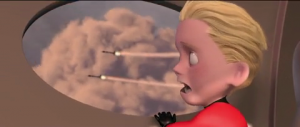 The Incredibles devotes a good deal of its running time hence to winking at this farce, which would serve as generic fare for a suburban drama except that this isn’t one. Really, what adds a thrill to the sibling rivalries and the couple arguments is precisely that we’ve seen them before, save that they’ve never before included the visual spectacle of a family entangled around a dining table or an enraged housewife’s head stretching for the ceiling. Likewise, Bob’s “bowling nights” and “business trips” are all a sham, lent new meaning because his indulgences lie in action sequences. But what’s less observed about The Incredibles is that the reverse is also true. The tropes of the superhero movie offers a sheen of invulnerability to these characters that, at its keenest, the movie strips away by pointing out that this is a family. I’m thinking here of the moment when Helen and the kids, while on a plane, find themselves pursued by a bunch of heat-seeking missiles. We’re so caught up by the immediate thrills of this setup, with Helen executing maneuvers while the kids tumble about the swerving plane, that it’s a rude shock when Helen yells over the air: “Abort, abort, there are children aboard!” We’ve been put on by the verve of the editing, the genre’s tropes and the gloss of the animation, and so the best parts of The Incredibles are suffused with the urgency of Helen’s voice here, punching through all that surface to remind us that real human lives—and relationships—are at stake.
The Incredibles devotes a good deal of its running time hence to winking at this farce, which would serve as generic fare for a suburban drama except that this isn’t one. Really, what adds a thrill to the sibling rivalries and the couple arguments is precisely that we’ve seen them before, save that they’ve never before included the visual spectacle of a family entangled around a dining table or an enraged housewife’s head stretching for the ceiling. Likewise, Bob’s “bowling nights” and “business trips” are all a sham, lent new meaning because his indulgences lie in action sequences. But what’s less observed about The Incredibles is that the reverse is also true. The tropes of the superhero movie offers a sheen of invulnerability to these characters that, at its keenest, the movie strips away by pointing out that this is a family. I’m thinking here of the moment when Helen and the kids, while on a plane, find themselves pursued by a bunch of heat-seeking missiles. We’re so caught up by the immediate thrills of this setup, with Helen executing maneuvers while the kids tumble about the swerving plane, that it’s a rude shock when Helen yells over the air: “Abort, abort, there are children aboard!” We’ve been put on by the verve of the editing, the genre’s tropes and the gloss of the animation, and so the best parts of The Incredibles are suffused with the urgency of Helen’s voice here, punching through all that surface to remind us that real human lives—and relationships—are at stake.
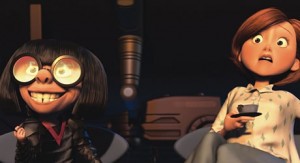
Among the Incredibles, then, Helen’s arc is to me the most interesting, not least because she’s the character most saddled with taking care of everyone else, while also being most at ease with hiding her own powers. In a way, she has it easy: as a housewife, she isn’t as burdened with holding her powers back in public, as Bob and Dash are behind their desks. It’s a believable subtext to me that Helen is keeping them both from any job or sport that could even use a measure of their physical prowess, since they might be prone to showing it off. But Helen’s problem is that she is almost too adaptable, making it seem that she has compromised little even when she reduces the range of her elastic arms to the furthest reaches of the living-room carpet.
Her take on post-superhero life can be contrasted with that of Edna Mode, Helen’s erstwhile costume designer. While it is implied that—like Helen—Edna is still free to use her talents in her new field, she thrills more obviously at the functionality of her craftsmanship, both in her legendary “no capes!” monologue and in her gleeful private showcase to Helen of her new costumes. More importantly, she talks circles around Bob and Helen to get them (and the children) to fully reclaim their identities as supers. She maneuvers Bob into “convincing” her to create a new suit for him, which means that he isn’t just “re-living the glory days” but pursuing himself anew. She refuses to acknowledge Helen on the phone until the latter identifies herself as Elastigirl. She insists that Helen show up at her place (for the costume showcase, although she doesn’t reveal that yet) without leaving her any room to stammer her hesistant replies. She awakens Helen to the fact that Bob may not be doing what Helen has convinced herself he is doing, and then offers Helen the means to lead her to him. She gets indignant when Helen weeps like a hapless housewife, thwacking her and telling her to buck up and take Bob back. And she creates costumes for the children (and, it is implied, insists that Helen take them), despite Helen’s reluctance to let the kids have them, thus creating opportunities for the kids to find out for themselves and claim their super-identities as well. Voiced by Brad Bird himself, Edna thus represents The Incredibles’ guide into a new realm of possibilities.
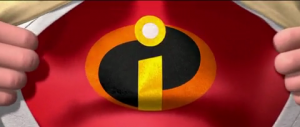 Just as, I might add, The Incredibles represents Pixar’s own guide into a new realm of possibilities. The movie so richly unfolds the novelistic implications of its premise that, even as it draws to a close, we’re still left with plenty of questions unanswered. Can Violet be distilled into her arc from shy waif to confident girl, and how exactly will her particular way of not “being normal” affect her romantic prospects? Surely Dash can’t be content with confusing his way through every race, but is there even to be a proper answer for him? What future does this portend for their mutual sibling, who has yet to discover his own potential? And what of side characters like the villain’s assistant, whose powers we realise we haven’t even seen? As Nick Davis points out, the movie ends on its own tantalising question, as threats to “declare war on peace and happiness!” are overlaid onto images of the Incredibles reclaiming their masked identity. The Incredibles, then, is the one movie out of Pixar’s oeuvre to which I most want to see a sequel, but it’s also the movie that poses its own greatest challenge to such a possibility, layering on the heights of visual and sonic pizzazz as well as newly enlivened depths of feeling. And, unfortunately, this is not a challenge that I’m sure Pixar can achieve.
Just as, I might add, The Incredibles represents Pixar’s own guide into a new realm of possibilities. The movie so richly unfolds the novelistic implications of its premise that, even as it draws to a close, we’re still left with plenty of questions unanswered. Can Violet be distilled into her arc from shy waif to confident girl, and how exactly will her particular way of not “being normal” affect her romantic prospects? Surely Dash can’t be content with confusing his way through every race, but is there even to be a proper answer for him? What future does this portend for their mutual sibling, who has yet to discover his own potential? And what of side characters like the villain’s assistant, whose powers we realise we haven’t even seen? As Nick Davis points out, the movie ends on its own tantalising question, as threats to “declare war on peace and happiness!” are overlaid onto images of the Incredibles reclaiming their masked identity. The Incredibles, then, is the one movie out of Pixar’s oeuvre to which I most want to see a sequel, but it’s also the movie that poses its own greatest challenge to such a possibility, layering on the heights of visual and sonic pizzazz as well as newly enlivened depths of feeling. And, unfortunately, this is not a challenge that I’m sure Pixar can achieve.
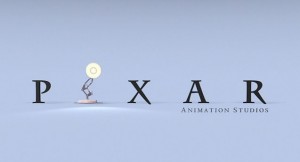
For what are we to make of Pixar’s current status, another five years since its last creative peak? For me, Pixar’s four features since The Incredibles have been disappointing efforts by its stable of auteurs, each of whom handed in superior contributions during the studio’s impressive streak: Cars, widely acknowledged to be Pixar’s first dud, was nowhere in the realm of John Lasseter’s Toy Story movies; while Ratatouille, reprising Brad Bird’s theme of unappreciated talent from The Incredibles, paired it this time around with an unconvincing “Anyone Can Cook!” thesis that one character (an easily-unconvinced critic, no less!) had to apologise for in the last reel—not to forget how it loses with Colette the ground that Edna and Helen so valiantly fought for on the women’s front. And allow me this honesty, but Andrew Stanton’s WALL•E never gives its title character any real hurdles to surmount, compared to the palpable danger his protagonists feel in Finding Nemo; while Pete Docter’s Up, despite a few touching moments between its elderly hero and his late wife, never builds a convincing relationship between any of its other characters as enduring as the one in Monsters, Inc between Sully and Boo.
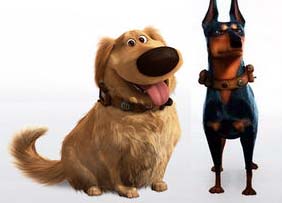 It appears to me that Pixar no longer has the creative discipline to marshall its pool of admittedly-wondrous elements into fully cohesive stories, whether we can attribute this to its full ownership by Disney, its unrivalled artistic freedom as a studio or its lack of new blood since Bird joined the team. Up, touted by some as its most mature movie, strikes me instead as its most infantile yet. Consider an aspect as seemingly tiny as the way it treats its dogs—which, if you’ve followed my argument about sidelined characters, may be the most telling detail of the quality of a Pixar movie. Is it at all hard to decide if the gleeful retriever and the pinched Doberman are meant to be anything other than “good” and “evil” respectively, especially with the choice of species? And is the tinny squeak that the latter’s malfunctioning “voice” often segues into meant to elicit any emotion other than mean-spirited laughter?
It appears to me that Pixar no longer has the creative discipline to marshall its pool of admittedly-wondrous elements into fully cohesive stories, whether we can attribute this to its full ownership by Disney, its unrivalled artistic freedom as a studio or its lack of new blood since Bird joined the team. Up, touted by some as its most mature movie, strikes me instead as its most infantile yet. Consider an aspect as seemingly tiny as the way it treats its dogs—which, if you’ve followed my argument about sidelined characters, may be the most telling detail of the quality of a Pixar movie. Is it at all hard to decide if the gleeful retriever and the pinched Doberman are meant to be anything other than “good” and “evil” respectively, especially with the choice of species? And is the tinny squeak that the latter’s malfunctioning “voice” often segues into meant to elicit any emotion other than mean-spirited laughter?
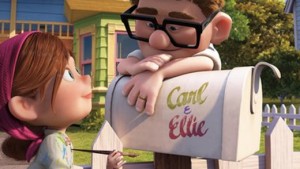 As a contrast, I contend that the most hard-hitting part of Up is not the much-heralded montage showing Carl’s relationship with his wife up to her death, but a moment that comes after: when his mailbox, a memento of his late wife, is knocked over by a construction vehicle, Carl rushes to protect it from the well-meaning construction worker who steps up to fix it. In the ensuing struggle, Carl thwacks the worker on the head with his cane, and an unforeseeable thing happens: the worker starts to bleed. In my mind, there’s nothing in the movie that comes close to this moment, as poignant as the best bits of Toy Story 2 and The Incredibles, when we’re swung around to the other person’s perspective, even for just a while. If Pixar could reclaim its gift for shaping these moments consistently through a movie, in next year’s Toy Story 3, in the potential The Incredibles 2, or simply in any of its features to come—then I, for one, can’t wait to be there. But if it doesn’t, then at least it will have made two unimpeachable gems, if only to shame all the rest.
As a contrast, I contend that the most hard-hitting part of Up is not the much-heralded montage showing Carl’s relationship with his wife up to her death, but a moment that comes after: when his mailbox, a memento of his late wife, is knocked over by a construction vehicle, Carl rushes to protect it from the well-meaning construction worker who steps up to fix it. In the ensuing struggle, Carl thwacks the worker on the head with his cane, and an unforeseeable thing happens: the worker starts to bleed. In my mind, there’s nothing in the movie that comes close to this moment, as poignant as the best bits of Toy Story 2 and The Incredibles, when we’re swung around to the other person’s perspective, even for just a while. If Pixar could reclaim its gift for shaping these moments consistently through a movie, in next year’s Toy Story 3, in the potential The Incredibles 2, or simply in any of its features to come—then I, for one, can’t wait to be there. But if it doesn’t, then at least it will have made two unimpeachable gems, if only to shame all the rest.
This piece also doubled as an entry for Pixar Week over at The House Next Door. For more critical analyses of Pixar’s work, please head over there and have a look!
Toy Story 2 | 1999 | USA | Director: John Lasseter, Ash Brannon, Lee Unkrich | Screenplay: John Lasseter, Pete Docter, Ash Brannon, Andrew Stanton, Rita Hsiao, Doug Chamberlin, Chris Webb| Cast: Tom Hanks, Tim Allen, Joan Cusack, Kelsey Grammer, Don Rickles, Jim Varney, Wallace Shawn, John Ratzenberger, Wayne Knight
The Incredibles | 2004 | USA | Director: Brad Bird | Screenplay: Brad Bird | Cast: Craig T. Nelson, Holly Hunter, Spencer Fox, Sarah Vowell, Jason Lee, Samuel L. Jackson, Elizabeth Peña, Brad Bird
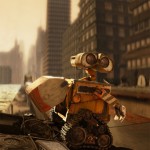 In my WALL·E review, I noted this complaint:
In my WALL·E review, I noted this complaint: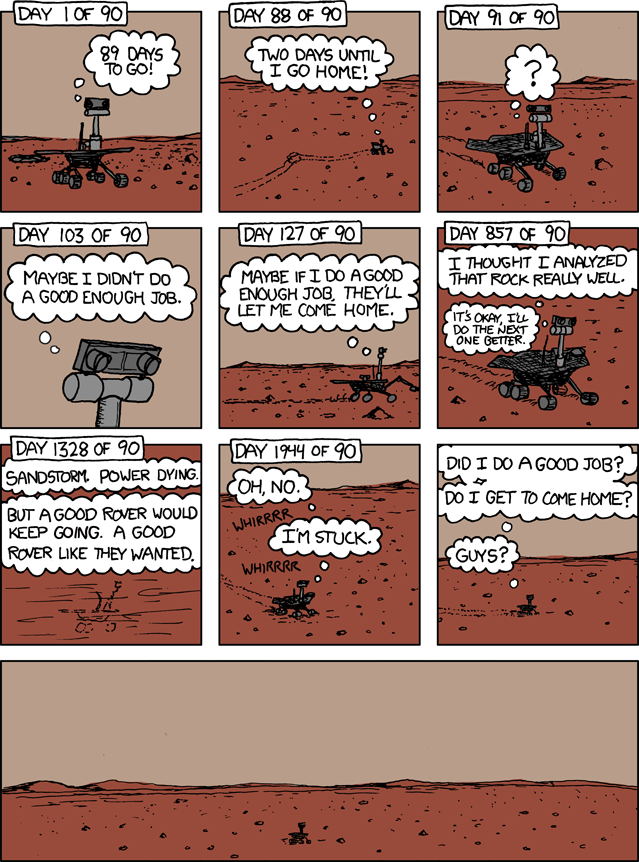

 Here are my
Here are my 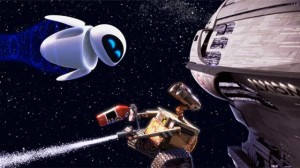

 Now that Buzz no longer thinks he is an actual space ranger, a delusion that drove his narrative arc in the first movie,
Now that Buzz no longer thinks he is an actual space ranger, a delusion that drove his narrative arc in the first movie,  Ironically, we’re alerted that Woody has grown up only after his owner Andy swiftly abandons him to a dusty shelf before leaving for camp, reigniting his former fears. After a hilariously surreal nightmare, Woody wakes up (quite literally) to the notion that his fate is nowhere as jeopardised as those of the toys who don’t share his owner’s favour. Even in Andy’s absence, his mom pointedly doesn’t add Woody to her pickings for a junkyard sale (a scrawled “25¢” is the sly insulting detail in this scene), but in an unforeseen act of gallantry, Woody initiates a rescue mission for the toys that she has. This quickly goes awry, leaving Woody stranded a long way from home once more. Unlike the first movie, though, his story from there doesn’t boil down to a simple “get back to Andy!” motive, coupled with diverting obstacles along the way. Not that Toy Story 2 abandons the pleasures of such a narrative: it twines in a parallel action plot requiring Woody’s peers to navigate the harsh territory of a toy megastore, a capitalist satire populated with ever-smiling Barbies, still-deluded Buzz Lightyears, and the treachery of gaming guides and automatic doors.
Ironically, we’re alerted that Woody has grown up only after his owner Andy swiftly abandons him to a dusty shelf before leaving for camp, reigniting his former fears. After a hilariously surreal nightmare, Woody wakes up (quite literally) to the notion that his fate is nowhere as jeopardised as those of the toys who don’t share his owner’s favour. Even in Andy’s absence, his mom pointedly doesn’t add Woody to her pickings for a junkyard sale (a scrawled “25¢” is the sly insulting detail in this scene), but in an unforeseen act of gallantry, Woody initiates a rescue mission for the toys that she has. This quickly goes awry, leaving Woody stranded a long way from home once more. Unlike the first movie, though, his story from there doesn’t boil down to a simple “get back to Andy!” motive, coupled with diverting obstacles along the way. Not that Toy Story 2 abandons the pleasures of such a narrative: it twines in a parallel action plot requiring Woody’s peers to navigate the harsh territory of a toy megastore, a capitalist satire populated with ever-smiling Barbies, still-deluded Buzz Lightyears, and the treachery of gaming guides and automatic doors. But the major plot of Toy Story 2 turns on an empathic dilemma, not on physical shenanigans. When Woody finds himself with a trio of spin-off toys from his merchandised TV series, he is saddled with deciding the fate of a community to which he never knew he belonged. What continually amazes me is how deeply the stakes change—from being usurped to being forgotten entirely, and then into a choice between ephemeral bliss or a lifetime of compromised happiness—even as Woody remains in the same room throughout. For all its visual wonders, Toy Story 2 hinges ultimately on its rhetorical power, in two heartbreaking songs (the nostalgic elegies “When She Loved Me” and “You’ve Got A Friend in Me”) and in the specific histories evoked by Buzz, to events of the previous movie; and by these new characters, to their own identifiable offscreen troubles. Given that each side has a point, Woody’s eventual decision is deeply satisfying, which is why the curt end he deals to one antagonist may come off as more puerile than it deserves to be—a notable lapse in the movie’s otherwise-gratifying maturity.
But the major plot of Toy Story 2 turns on an empathic dilemma, not on physical shenanigans. When Woody finds himself with a trio of spin-off toys from his merchandised TV series, he is saddled with deciding the fate of a community to which he never knew he belonged. What continually amazes me is how deeply the stakes change—from being usurped to being forgotten entirely, and then into a choice between ephemeral bliss or a lifetime of compromised happiness—even as Woody remains in the same room throughout. For all its visual wonders, Toy Story 2 hinges ultimately on its rhetorical power, in two heartbreaking songs (the nostalgic elegies “When She Loved Me” and “You’ve Got A Friend in Me”) and in the specific histories evoked by Buzz, to events of the previous movie; and by these new characters, to their own identifiable offscreen troubles. Given that each side has a point, Woody’s eventual decision is deeply satisfying, which is why the curt end he deals to one antagonist may come off as more puerile than it deserves to be—a notable lapse in the movie’s otherwise-gratifying maturity. Narrative ingenuity aside, Toy Story 2 sparks to its own immaculate construction, boasting some of the most jocular, attention-calling scene transitions this side of Citizen Kane: an American flag billowing behind a stump-speechmaker, an offhand order to “use your head!”, etc. The movie operates on the kind of delirious logic where a minefield of Cheetos looms wider than a four-lane street in busy traffic; where drivers swerve to obey traffic cones; where a plane lands on a runway after the last one barely left it; or where, in more targeted allusions, characters are disarmed swiftly by parental revelations (Star Wars) or camera flashes (Rear Window). Screw Tarantino or Dante! Here John Lasseter presents us movie-moviedom at its finest, in which our heroes are powered by the forces of entertainment, and the laws by which their universe runs are not only informed, but dictated by the movements of earlier classics. (Even when the movement is that of a gurgling belly, at its funniest here since Chaplin’s Modern Times.) And if its heaps of wit and feeling are to be any indication, Toy Story 2 can stand proudly aside these classics as one of the best that cinema has to offer.
Narrative ingenuity aside, Toy Story 2 sparks to its own immaculate construction, boasting some of the most jocular, attention-calling scene transitions this side of Citizen Kane: an American flag billowing behind a stump-speechmaker, an offhand order to “use your head!”, etc. The movie operates on the kind of delirious logic where a minefield of Cheetos looms wider than a four-lane street in busy traffic; where drivers swerve to obey traffic cones; where a plane lands on a runway after the last one barely left it; or where, in more targeted allusions, characters are disarmed swiftly by parental revelations (Star Wars) or camera flashes (Rear Window). Screw Tarantino or Dante! Here John Lasseter presents us movie-moviedom at its finest, in which our heroes are powered by the forces of entertainment, and the laws by which their universe runs are not only informed, but dictated by the movements of earlier classics. (Even when the movement is that of a gurgling belly, at its funniest here since Chaplin’s Modern Times.) And if its heaps of wit and feeling are to be any indication, Toy Story 2 can stand proudly aside these classics as one of the best that cinema has to offer.
 Even the superpowers dealt to each family member seems to fit the idiom: Dad is strong, Mom is flexible, the son is brash, and the daughter self-effacing. Despite my attempt to be catchy in the previous sentence, though, I find that the labels I’ve used inaccurately reduce these characters to their roles as parents and children. For one, Bob Parr (aka Mr Incredible) can barely be said to demand the title of “Dad”, at least early on. After his feats in the movie’s prologue, we find him fifteen years later cramped—behind a desk, inside a car, within a frustratingly impotent job—and then distracted at the dinner table, where he all but ignores his family, scanning the papers for ex-superhero news before abandoning them for “bowling night”. “Mom” does suit Helen (née Elastigirl) better in the post-prologue, where we find her as a housewife, washing the baby at the sink, visiting the principal’s office, fetching the kids. But the spectre of Helen’s proto-feminist past (“Leave the saving of the world to the men? I don’t think so!”) haunts and complicates this reading considerably—and I’ll have more to say about this later. Meanwhile, the kids struggle with their own gender-ascribed troubles, with Dash frustrated that he can’t flaunt his talent at running, and Violet sneaking glances at the boy of her affections while (literally) invisible.
Even the superpowers dealt to each family member seems to fit the idiom: Dad is strong, Mom is flexible, the son is brash, and the daughter self-effacing. Despite my attempt to be catchy in the previous sentence, though, I find that the labels I’ve used inaccurately reduce these characters to their roles as parents and children. For one, Bob Parr (aka Mr Incredible) can barely be said to demand the title of “Dad”, at least early on. After his feats in the movie’s prologue, we find him fifteen years later cramped—behind a desk, inside a car, within a frustratingly impotent job—and then distracted at the dinner table, where he all but ignores his family, scanning the papers for ex-superhero news before abandoning them for “bowling night”. “Mom” does suit Helen (née Elastigirl) better in the post-prologue, where we find her as a housewife, washing the baby at the sink, visiting the principal’s office, fetching the kids. But the spectre of Helen’s proto-feminist past (“Leave the saving of the world to the men? I don’t think so!”) haunts and complicates this reading considerably—and I’ll have more to say about this later. Meanwhile, the kids struggle with their own gender-ascribed troubles, with Dash frustrated that he can’t flaunt his talent at running, and Violet sneaking glances at the boy of her affections while (literally) invisible. The Incredibles devotes a good deal of its running time hence to winking at this farce, which would serve as generic fare for a suburban drama except that this isn’t one. Really, what adds a thrill to the sibling rivalries and the couple arguments is precisely that we’ve seen them before, save that they’ve never before included the visual spectacle of a family entangled around a dining table or an enraged housewife’s head stretching for the ceiling. Likewise, Bob’s “bowling nights” and “business trips” are all a sham, lent new meaning because his indulgences lie in action sequences. But what’s less observed about The Incredibles is that the reverse is also true. The tropes of the superhero movie offers a sheen of invulnerability to these characters that, at its keenest, the movie strips away by pointing out that this is a family. I’m thinking here of the moment when Helen and the kids, while on a plane, find themselves pursued by a bunch of heat-seeking missiles. We’re so caught up by the immediate thrills of this setup, with Helen executing maneuvers while the kids tumble about the swerving plane, that it’s a rude shock when Helen yells over the air: “Abort, abort, there are children aboard!” We’ve been put on by the verve of the editing, the genre’s tropes and the gloss of the animation, and so the best parts of The Incredibles are suffused with the urgency of Helen’s voice here, punching through all that surface to remind us that real human lives—and relationships—are at stake.
The Incredibles devotes a good deal of its running time hence to winking at this farce, which would serve as generic fare for a suburban drama except that this isn’t one. Really, what adds a thrill to the sibling rivalries and the couple arguments is precisely that we’ve seen them before, save that they’ve never before included the visual spectacle of a family entangled around a dining table or an enraged housewife’s head stretching for the ceiling. Likewise, Bob’s “bowling nights” and “business trips” are all a sham, lent new meaning because his indulgences lie in action sequences. But what’s less observed about The Incredibles is that the reverse is also true. The tropes of the superhero movie offers a sheen of invulnerability to these characters that, at its keenest, the movie strips away by pointing out that this is a family. I’m thinking here of the moment when Helen and the kids, while on a plane, find themselves pursued by a bunch of heat-seeking missiles. We’re so caught up by the immediate thrills of this setup, with Helen executing maneuvers while the kids tumble about the swerving plane, that it’s a rude shock when Helen yells over the air: “Abort, abort, there are children aboard!” We’ve been put on by the verve of the editing, the genre’s tropes and the gloss of the animation, and so the best parts of The Incredibles are suffused with the urgency of Helen’s voice here, punching through all that surface to remind us that real human lives—and relationships—are at stake.
 Just as, I might add, The Incredibles represents Pixar’s own guide into a new realm of possibilities. The movie so richly unfolds the novelistic implications of its premise that, even as it draws to a close, we’re still left with plenty of questions unanswered. Can Violet be distilled into her arc from shy waif to confident girl, and how exactly will her particular way of not “being normal” affect her romantic prospects? Surely Dash can’t be content with confusing his way through every race, but is there even to be a proper answer for him? What future does this portend for their mutual sibling, who has yet to discover his own potential? And what of side characters like the villain’s assistant, whose powers we realise we haven’t even seen? As Nick Davis
Just as, I might add, The Incredibles represents Pixar’s own guide into a new realm of possibilities. The movie so richly unfolds the novelistic implications of its premise that, even as it draws to a close, we’re still left with plenty of questions unanswered. Can Violet be distilled into her arc from shy waif to confident girl, and how exactly will her particular way of not “being normal” affect her romantic prospects? Surely Dash can’t be content with confusing his way through every race, but is there even to be a proper answer for him? What future does this portend for their mutual sibling, who has yet to discover his own potential? And what of side characters like the villain’s assistant, whose powers we realise we haven’t even seen? As Nick Davis 
 It appears to me that Pixar no longer has the creative discipline to marshall its pool of admittedly-wondrous elements into fully cohesive stories, whether we can attribute this to its full ownership by Disney, its unrivalled artistic freedom as a studio or its lack of new blood since Bird joined the team. Up, touted by some as its most mature movie, strikes me instead as its most infantile yet. Consider an aspect as seemingly tiny as the way it treats its dogs—which, if you’ve followed my argument about sidelined characters, may be the most telling detail of the quality of a Pixar movie. Is it at all hard to decide if the gleeful retriever and the pinched Doberman are meant to be anything other than “good” and “evil” respectively, especially with the choice of species? And is the tinny squeak that the latter’s malfunctioning “voice” often segues into meant to elicit any emotion other than mean-spirited laughter?
It appears to me that Pixar no longer has the creative discipline to marshall its pool of admittedly-wondrous elements into fully cohesive stories, whether we can attribute this to its full ownership by Disney, its unrivalled artistic freedom as a studio or its lack of new blood since Bird joined the team. Up, touted by some as its most mature movie, strikes me instead as its most infantile yet. Consider an aspect as seemingly tiny as the way it treats its dogs—which, if you’ve followed my argument about sidelined characters, may be the most telling detail of the quality of a Pixar movie. Is it at all hard to decide if the gleeful retriever and the pinched Doberman are meant to be anything other than “good” and “evil” respectively, especially with the choice of species? And is the tinny squeak that the latter’s malfunctioning “voice” often segues into meant to elicit any emotion other than mean-spirited laughter? As a contrast, I contend that the most hard-hitting part of Up is not the much-heralded montage showing Carl’s relationship with his wife up to her death, but a moment that comes after: when his mailbox, a memento of his late wife, is knocked over by a construction vehicle, Carl rushes to protect it from the well-meaning construction worker who steps up to fix it. In the ensuing struggle, Carl thwacks the worker on the head with his cane, and an unforeseeable thing happens: the worker starts to bleed. In my mind, there’s nothing in the movie that comes close to this moment, as poignant as the best bits of Toy Story 2 and The Incredibles, when we’re swung around to the other person’s perspective, even for just a while. If Pixar could reclaim its gift for shaping these moments consistently through a movie, in next year’s Toy Story 3, in the potential The Incredibles 2, or simply in any of its features to come—then I, for one, can’t wait to be there. But if it doesn’t, then at least it will have made two unimpeachable gems, if only to shame all the rest.
As a contrast, I contend that the most hard-hitting part of Up is not the much-heralded montage showing Carl’s relationship with his wife up to her death, but a moment that comes after: when his mailbox, a memento of his late wife, is knocked over by a construction vehicle, Carl rushes to protect it from the well-meaning construction worker who steps up to fix it. In the ensuing struggle, Carl thwacks the worker on the head with his cane, and an unforeseeable thing happens: the worker starts to bleed. In my mind, there’s nothing in the movie that comes close to this moment, as poignant as the best bits of Toy Story 2 and The Incredibles, when we’re swung around to the other person’s perspective, even for just a while. If Pixar could reclaim its gift for shaping these moments consistently through a movie, in next year’s Toy Story 3, in the potential The Incredibles 2, or simply in any of its features to come—then I, for one, can’t wait to be there. But if it doesn’t, then at least it will have made two unimpeachable gems, if only to shame all the rest.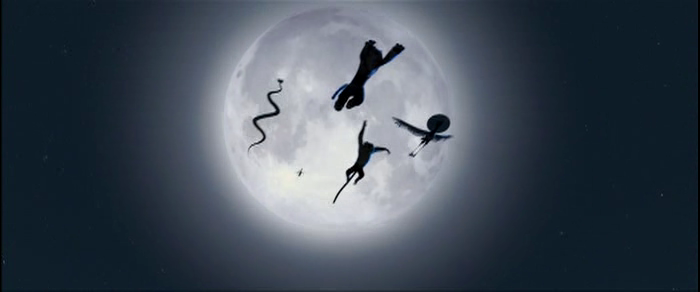
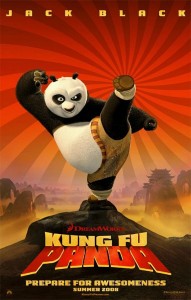 Kung Fu Panda is the kind of working title we’d expect from studio executives hoping to stretch a one-note high concept into a full-length feature. It doesn’t help that the movie bears the usual marks of a stodgy DreamWorks animation: 1) a roundup of celebrity “voice actors” who have been corralled more for their marquee names than for their vocal expressiveness; 2) a trailer with its dreadful abundance of obese humour, in turn suggesting all the jokes about bodily expulsions hiding around the corner; and 3) a half-cutesy, half-grotesque protagonist who is modelled after the celebrity persona of his voice actor, whose “comic” contributions surely involve the sort of hijinks associated with that celeb. Add a trashy sensibility of chop-socky and slapstick, a predictably archetypal tale, and the lowbrow pedigree of its animation studio, and what critics’ glass ceilings can Kung Fu Panda be reasonably expected to conquer?
Kung Fu Panda is the kind of working title we’d expect from studio executives hoping to stretch a one-note high concept into a full-length feature. It doesn’t help that the movie bears the usual marks of a stodgy DreamWorks animation: 1) a roundup of celebrity “voice actors” who have been corralled more for their marquee names than for their vocal expressiveness; 2) a trailer with its dreadful abundance of obese humour, in turn suggesting all the jokes about bodily expulsions hiding around the corner; and 3) a half-cutesy, half-grotesque protagonist who is modelled after the celebrity persona of his voice actor, whose “comic” contributions surely involve the sort of hijinks associated with that celeb. Add a trashy sensibility of chop-socky and slapstick, a predictably archetypal tale, and the lowbrow pedigree of its animation studio, and what critics’ glass ceilings can Kung Fu Panda be reasonably expected to conquer?
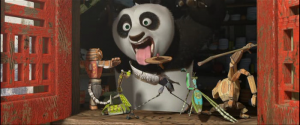 Even if the movie weren’t honed so astutely towards Po’s plight as an obese character, it offers another avenue of identification with him: in his fanatic passion for kungfu. We don’t need to have watched an action flick to know the adrenaline-laden thrills of a fight, and we all know that the heightened, expertly-placed movements are more a result of choreography than finely-honed instincts, and yet we still feel the pang in knowing that we fall short of such impossible perfection. Po’s marvelling at his encounters is thus not an alien reaction to us, and the movie forces us to be Po’s distanced companion by withholding what he (and we) desperately wants to but cannot see at an early kungfu showcase. By the time he’s spirited away to the Furious Five’s temple and left there alone, we’re complicit in his exploration of this inner sanctum, and learn from the drops of his jaw the value of the treasures we encounter within—the movie’s sneaky way of making up its own self-contained myths.
Even if the movie weren’t honed so astutely towards Po’s plight as an obese character, it offers another avenue of identification with him: in his fanatic passion for kungfu. We don’t need to have watched an action flick to know the adrenaline-laden thrills of a fight, and we all know that the heightened, expertly-placed movements are more a result of choreography than finely-honed instincts, and yet we still feel the pang in knowing that we fall short of such impossible perfection. Po’s marvelling at his encounters is thus not an alien reaction to us, and the movie forces us to be Po’s distanced companion by withholding what he (and we) desperately wants to but cannot see at an early kungfu showcase. By the time he’s spirited away to the Furious Five’s temple and left there alone, we’re complicit in his exploration of this inner sanctum, and learn from the drops of his jaw the value of the treasures we encounter within—the movie’s sneaky way of making up its own self-contained myths.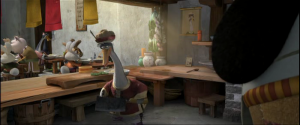 But if the movie’s youths are lost and flailing, its adults are ensconced in their wisdom, which is neither too conservative nor nonsensical for us to dismiss altogether. Po’s father is a pragmatic noodle-seller who believes that “we all have a place in this world,” and that he has inherited his. The writers give him an affecting monologue, only five minutes into the movie, about once having dreamt of running away to make tofu, and his voice actor James Hong deftly lets unease creep into the half-hearted chortles with which he dismisses his nostalgia for that dream. The writers and Hong also nail the near-callous way that he assumes the foolishness of Po’s own dreams while never seeming like an unsupportive parent—Hong bouncily inflects his natterings about noodles after Po underplays his true ambitions; and few visuals are as economical as the one in which Po embraces his father, separating to find that the latter has tied an apron around his waist. Likewise, Po’s master Shifu doesn’t know what to do with a youngster except to train their kungfu by being a mean old bastard to them, often justified in the pursuit of a Dragon Warrior status that they were never meant for. And one shouldn’t think too much about how the whole chain of events would never have begun but for the needless orchestration of Shifu’s master, Wugui, in his platitudinal attitude towards the nature of fate. Let us just say that for all Wugui’s insistence that “there is no good or bad”, he is partly responsible for the application of those labels to various characters in this tale.
But if the movie’s youths are lost and flailing, its adults are ensconced in their wisdom, which is neither too conservative nor nonsensical for us to dismiss altogether. Po’s father is a pragmatic noodle-seller who believes that “we all have a place in this world,” and that he has inherited his. The writers give him an affecting monologue, only five minutes into the movie, about once having dreamt of running away to make tofu, and his voice actor James Hong deftly lets unease creep into the half-hearted chortles with which he dismisses his nostalgia for that dream. The writers and Hong also nail the near-callous way that he assumes the foolishness of Po’s own dreams while never seeming like an unsupportive parent—Hong bouncily inflects his natterings about noodles after Po underplays his true ambitions; and few visuals are as economical as the one in which Po embraces his father, separating to find that the latter has tied an apron around his waist. Likewise, Po’s master Shifu doesn’t know what to do with a youngster except to train their kungfu by being a mean old bastard to them, often justified in the pursuit of a Dragon Warrior status that they were never meant for. And one shouldn’t think too much about how the whole chain of events would never have begun but for the needless orchestration of Shifu’s master, Wugui, in his platitudinal attitude towards the nature of fate. Let us just say that for all Wugui’s insistence that “there is no good or bad”, he is partly responsible for the application of those labels to various characters in this tale.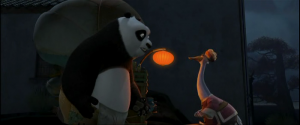 Later, another surprise involves a dejected Po admitting to his father that sometimes he can’t believe he’s his son. “Oh…” replies his father. “Po, I think it’s time I told you something I should have told you a long time ago.” We’re primed by this exchange to expect a certain answer that’s been hinted at earlier, when the panda’s father—a goose—scrolls through a hilarious sequence of portraits of his father and grandfather—also geese. But instead, Po’s father switches his revelation for a seeming nonsequitur that so neatly ties up another plot thread before cutting away, we hardly realize that he wasn’t offering a nonsequitur at all, but an oblique and far more profound answer to Po’s doubts than we might have expected. Gamely, the script takes its apparent platitude about self-confidence and flips it into an insight about how we treasure the relationships dealt to us by fate, adding a new facet to the recurring brief exchanges of who is (or is not) whose master, and making a subsequent reunion between father and son all the sweeter—but only if we are willing to sit up and look past the surface cliché.
Later, another surprise involves a dejected Po admitting to his father that sometimes he can’t believe he’s his son. “Oh…” replies his father. “Po, I think it’s time I told you something I should have told you a long time ago.” We’re primed by this exchange to expect a certain answer that’s been hinted at earlier, when the panda’s father—a goose—scrolls through a hilarious sequence of portraits of his father and grandfather—also geese. But instead, Po’s father switches his revelation for a seeming nonsequitur that so neatly ties up another plot thread before cutting away, we hardly realize that he wasn’t offering a nonsequitur at all, but an oblique and far more profound answer to Po’s doubts than we might have expected. Gamely, the script takes its apparent platitude about self-confidence and flips it into an insight about how we treasure the relationships dealt to us by fate, adding a new facet to the recurring brief exchanges of who is (or is not) whose master, and making a subsequent reunion between father and son all the sweeter—but only if we are willing to sit up and look past the surface cliché.